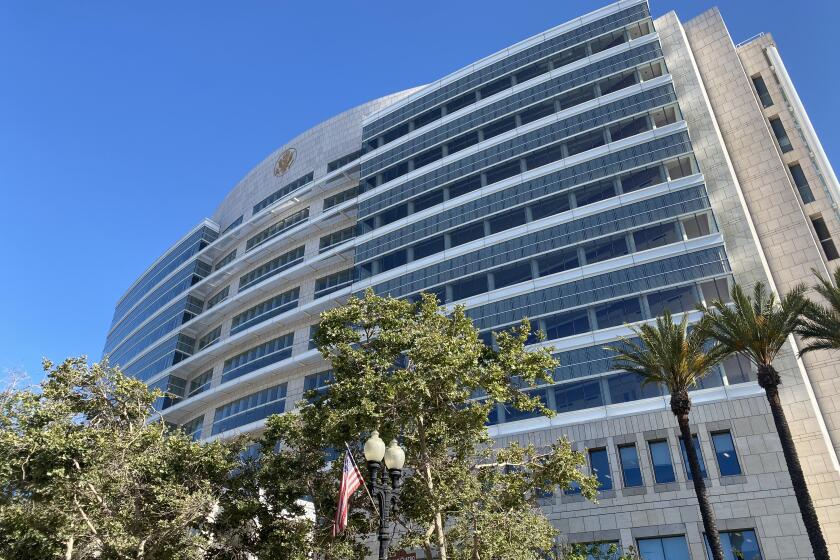1920s date palms are dying in Corona del Mar
- Share via
Driving down Marguerite Avenue toward Corona del Mar can give a little boost to even the most-boring commute — the ocean in the distance, the piers, Big Corona beach.
And then at the flat stretch are the date palms. They line the street from Fifth Avenue to Ocean Boulevard and rise above the tallest homes, marking their spot since they were planted in the 1920s.
And each one of the trees is dying.
“We first knew about this in the ‘20s,” said Dan Sereno, a Newport Beach city landscape manager.
The trees are all diseased, with no hope of being saved, he said.
“It’s a pathogen, a fungus that is airborne and soil born,” said John Conway, the city’s arborist. “It clogs the vessels of the plant, and nutrients can’t get up.”
At one point, Marguerite Avenue was home to about 120 of the trees. Now, Conway said, there are fewer than 70.
“I came to Newport Beach in December 1993,” Conway said. “Since then, we’ve been actively removing them on a one-by-one basis. In 20 years, we lost half. We probably have another 20 years before the rest are gone.”
Crews make routine inspections, keeping a lookout for symptoms that include fronds that are drying out.
“One side starts to go first,” Sereno said. “Evidently, it gets right up to the crown. Once it’s killed the new growth, it’s time to remove them. We wait as long as we can until all the fronds are dead.”
When the dead fronds are removed, he said, there’s only a small spike left on top. When the tree begins to droop, there’s a danger of it falling.
The trees are inspected three or four times a year, Sereno said. When they are trimmed, crews are required to take precautions to avoid spreading the disease.
“When we prune trees, you can transfer the infection from one tree to the other,” Sereno said. “We make them use a single-blade handsaw per tree. Chainsaws will transfer it. We don’t want to transfer it tree to tree.”
Date palms in other areas of the city, including Newport Coast and Corona del Mar State Beach — also known as Big Corona — also have shown signs of infection, he said.
When a tree finally is removed, the city replaces it with another variety of palm, the king palm, which ultimately can grow to the same height of 30 feet or more.
“Eventually they’ll be the same size,” Sereno said, adding that it could take up to 15 years. By replacing the trees gradually, he said, there will be more of a “married canopy,” and the loss of the old trees will be less dramatic.
King palms, Sereno said, will have a smaller trunk, “but they are a more-stately palm in a lot of people’s eyes.”
“It’s a beautiful tree,” he said. “It’s iconic. We wanted to keep palms here.”
King palms also aren’t showing any signs of disease, he said.
Removing the dying date palms, knowing that one day they will all be gone, is emotional, Sereno said.
“We’re scientists, horticulturists, we’ve been in the field a combined 70 to 80 years,” he said, referring to Conway and himself. “We get no joy in removing trees.”
It could be 20 or 30 years before the date palms are all gone, Sereno said.
“Or they could find a cure,” he said.
“They’re actively trying to find a cure,” Conway said. “I’ll probably be in a rest home by then.”



